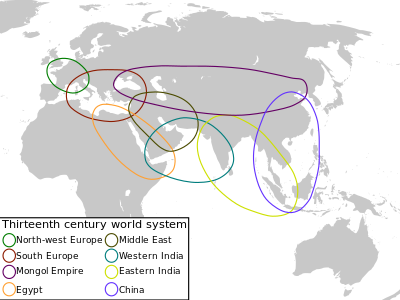Colloquium on Nepal
IV.Colloquium on Nepal
A. Piers Blaikie, John Cameron and David Seddon’s Nepal in Crisis: Growth and
Stagnation in the Periphery. Chapter 2. Pp.24-58.
B. Chaitanya Mishra: ‘Development and underdevelopment in Nepal: A preliminary
sociological perspective.’ 1987. In Chaitanya Mishra, Essays on the Sociology of Nepal.
Pp. 47-80
C. Chaitanya Mishra: ‘Nepal: Long term and lar Colloquium on linkaging the ‘Nepal
texts’ to the ge scale: History and theory.’ Pp. 18
D. Chaitanya Mishra: ‘Samrajyabad ra Nepalko bhawisys.’ Kantipur. Feb 20, 2013 (Fagun
9, 2069). P. 7.
E. Ian Carlos Fitzpatrick. Cardamom and Class: A Limbu Village and its Extensions in East
Nepal. Pp. 1-26, 183-228, 271-78
F. Bandita Sijapati and Amrita Limbu. Governing Labor Migration in Nepal: An Analysis of
Existing Policies and Institutional Mechanisms. Chapter 1. Pp.1-24
The **Colloquium on Nepal** provides a focused discussion on the unique socio-economic, political, and developmental challenges facing Nepal. By engaging with key texts, such as those by Piers Blaikie, Chaitanya Mishra, Ian Carlos Fitzpatrick, and others, this section helps bridge the global world-systems perspective with the specific context of Nepal, examining the country's **peripheral position** within the global capitalist system and the effects of internal and external forces on its development.
### A. **Piers Blaikie, John Cameron, and David Seddon: "Nepal in Crisis: Growth and Stagnation in the Periphery" (Chapter 2, Pp. 24-58)**
This text provides a detailed analysis of Nepal's **economic stagnation** and **growth challenges** within the context of its **peripheral position** in the global capitalist system. Blaikie, Cameron, and Seddon argue that Nepal’s development is constrained by a combination of **internal factors**—such as its geography and political structure—and **external pressures** from the world system.
#### Key Points:
- **Peripheral Position**: Nepal is situated in the **periphery** of the world system, meaning it is economically dependent on core countries and subject to external influences. Its economy is largely based on **subsistence agriculture** and **low-wage labor**, which makes it vulnerable to global market fluctuations and external shocks.
- **Internal Factors**: The authors highlight **geographical isolation**, **political instability**, and the **lack of infrastructure** as major hindrances to economic growth. These factors contribute to a stagnant economy where wealth accumulation and capital investment are difficult.
- **Dependency on External Aid**: Nepal relies heavily on **foreign aid** and **remittances**, which deepens its dependency on core nations. This creates a cycle of dependence, where Nepal is unable to build a self-sustaining economy and remains locked in underdevelopment.
- **Agrarian Crisis**: The majority of Nepal’s population is engaged in agriculture, but the sector is characterized by **low productivity** and **land fragmentation**. The agrarian structure, combined with environmental degradation and land exhaustion, exacerbates the country’s economic challenges.
The analysis emphasizes the importance of understanding **Nepal’s economic challenges** within the context of its peripheral position in the world-system, while also paying attention to domestic factors that contribute to its stagnation.
### B. **Chaitanya Mishra: "Development and Underdevelopment in Nepal: A Preliminary Sociological Perspective" (1987, Pp. 47-80)**
Chaitanya Mishra’s essay provides a **sociological perspective** on the development and underdevelopment of Nepal. Mishra examines how **class relations**, **social structures**, and **external forces** contribute to Nepal’s underdevelopment, drawing on both **world-systems theory** and **dependency theory** to frame his argument.
#### Key Points:
- **Internal Social Structures**: Mishra focuses on the **hierarchical social structures** in Nepal, particularly the **caste system** and **feudal land relations**, which perpetuate inequality and hinder development. The **elite class**, which controls much of the political and economic power, benefits from the existing system and has little incentive to promote broad-based development.
- **External Forces**: Like Blaikie, Cameron, and Seddon, Mishra highlights the impact of **external forces** on Nepal’s underdevelopment. He emphasizes Nepal’s dependence on **foreign aid**, **trade imbalances**, and **remittances** as factors that reinforce its peripheral status in the global economy.
- **Role of the State**: Mishra critiques the **Nepalese state** for failing to enact meaningful reforms that could reduce inequality and promote economic growth. He argues that the state often serves the interests of the **elite class**, perpetuating underdevelopment through policies that reinforce dependency on foreign aid and suppress social mobility.
- **Global Inequality**: Mishra connects Nepal’s underdevelopment to broader patterns of **global inequality**, arguing that the **capitalist world-system** inherently creates conditions of wealth for some nations and poverty for others. He suggests that meaningful development in Nepal would require structural changes at both the national and global levels.
### C. **Chaitanya Mishra: "Nepal: Long Term and Large Scale: History and Theory" (Pp. 18)**
In this work, Chaitanya Mishra expands on his previous analysis by taking a **long-term, large-scale view** of Nepal’s history and development. He examines how historical processes have shaped the country’s current socio-economic conditions, linking local and global forces over time.
#### Key Points:
- **Historical Development**: Mishra traces Nepal’s development back to the **pre-capitalist era**, highlighting how its position in the world system has changed over time. He argues that while Nepal has always been economically and politically marginal, its incorporation into the capitalist world-system in the 19th and 20th centuries intensified its **dependency** on external powers.
- **Colonial Legacy**: Mishra examines the role of **British colonialism** in shaping Nepal’s development, particularly through its impact on trade and **labor migration**. While Nepal was never formally colonized, it was heavily influenced by British economic and political interests in the region.
- **Theoretical Implications**: Mishra suggests that understanding Nepal’s long-term development requires a **multi-dimensional analysis** that considers both internal social structures and external forces. He argues that the **world-systems perspective** is valuable for understanding Nepal’s peripheral position but needs to be complemented by an analysis of domestic factors, such as class and state power.
### D. **Chaitanya Mishra: "Samrajyabad ra Nepalko Bhawisya" (Imperialism and the Future of Nepal) (Kantipur, Feb 20, 2013)**
In this article, Mishra discusses the continuing impact of **imperialism** on Nepal’s development and speculates on the country’s future. He argues that while traditional forms of imperialism may have declined, Nepal remains subject to new forms of economic and political domination.
#### Key Points:
- **Neo-imperialism**: Mishra argues that **neo-imperialism** continues to shape Nepal’s development through **international financial institutions**, **foreign aid** programs, and **bilateral relations** with powerful countries. These external forces often dictate Nepal’s economic policies, limiting the country’s sovereignty and ability to pursue independent development paths.
- **Future Prospects**: Mishra remains skeptical about Nepal’s future under the current global order. He argues that unless Nepal can **break free** from its dependence on external powers and reform its internal social and political structures, it is unlikely to achieve meaningful development.
### E. **Ian Carlos Fitzpatrick: "Cardamom and Class: A Limbu Village and its Extensions in East Nepal" (Pp. 1-26, 183-228, 271-78)**
Fitzpatrick’s work provides an in-depth **ethnographic study** of a **Limbu village** in Eastern Nepal, focusing on the intersections of **class** and **agricultural production**, particularly the cultivation of **cardamom**, a high-value cash crop.
#### Key Points:
- **Class Relations**: Fitzpatrick examines how the cultivation of cardamom has created new **class divisions** within the Limbu community. While some farmers have been able to accumulate wealth and social status through the sale of cardamom, others remain trapped in poverty due to **landlessness** or lack of access to resources.
- **Global Markets**: The success of cardamom farming is heavily dependent on access to **global markets**. Fitzpatrick highlights the **vulnerability** of local farmers to fluctuations in global prices, which can have devastating effects on their livelihoods.
- **Migration and Labor**: Fitzpatrick also explores the role of **labor migration** in the region, noting that many young people leave the village to work in cities or abroad. This migration has both positive and negative effects on the village economy, as remittances provide a source of income but also contribute to **social dislocation** and a lack of investment in local development.
### F. **Bandita Sijapati and Amrita Limbu: "Governing Labor Migration in Nepal: An Analysis of Existing Policies and Institutional Mechanisms" (Chapter 1, Pp. 1-24)**
This text examines the **policies and institutional mechanisms** governing **labor migration** in Nepal. Sijapati and Limbu analyze the effectiveness of current policies in managing the large-scale migration of Nepalese workers abroad, particularly to the Gulf countries and Malaysia.
#### Key Points:
- **Labor Migration**: Nepal has one of the highest rates of **labor migration** in the world, with millions of Nepalese working abroad, primarily in low-wage, high-risk jobs. Remittances from these workers are a major source of income for Nepal’s economy, but the migration process is fraught with challenges.
- **Policy Gaps**: Sijapati and Limbu highlight the **inadequacies** in Nepal’s labor migration policies, including weak enforcement of labor rights, lack of support for migrants, and **corruption** within recruitment agencies. These gaps leave many migrant workers vulnerable to exploitation and abuse.
- **Economic Dependence**: The authors argue that Nepal’s reliance on **remittances** as a major source of income creates a form of **economic dependency** that limits the country’s ability to develop more sustainable forms of economic growth.
### Conclusion
The **Colloquium on Nepal** readings offer a rich and nuanced examination of the country’s development challenges, particularly in the context of the global capitalist system. These texts draw attention to Nepal’s peripheral position in the world economy, its reliance on external aid and remittances, and the deep-rooted






























